The vertx EDC satchel makes and excellent Go Bag for urban environments.
You won’t fool folks who live the tactical lifestyle as to its purpose, but we understand the role of the Go Bag and naturally suspect it as the purpose of any bag or pack that size.
Part 1 of this series defined the niche of the Go Bag in the context of the Modular Survival Kit and listed sample EDC and security-related contents. This article continues that list starting with +aid/medical.
+Aid/Medical Treatment
Trauma and +Aid supplies to complete the minimalist medical supplies carried in an EDC Trauma Kit and PSK.
Sample Contents:
- Flat IFAK (Individual First Aid Kit), SO Tech – Despite the name of the kit, this is a small trauma kit that should complete the minimal supplies carried in an EDC Trauma Kit, while still filling the role of a standalone kit should it be separated from you and the supplies carried in your survival/self-recovery core layer enabling you to “toss” this kit, leaving it to treat one victim while you treat another or deal with any remaining security threat. To the best of my knowledge, SO Tech was the first company to create an IFAK in a flat formfactor. This is important if you pull it out of the bag and put the pouch on loadbearing equipment. While a big football-shaped IFAK is fine while you are standing up and some Marines even like to use to support the arm holding their weapon to prevent fatigue, they get in the way when you sit in a vehicle or lay down prone behind cover.
- Tourniquet – There are many effective tourniquets on the market, but I choose the SWAT -T for use in this kit because it packs so flat and is multi-use in case you don’t need a tourniquet but do need a compression bandage or something else. Because this TQ is basically a sheet of elastic rubber, strips of it could also be pressed into service as a band to propel a fling spear or as bands to drive an otter board for food procurement. An otter board is essentially a small boat driven by a paddlewheel used to position fishing lines that trail down from the boat. It also has a line attached to it so you can retrieve it … hopefully along with your catch.
- Trauma Bandage – The flat-packed versions of trauma bandages such as the OALES modular bandage or Israeli bandage are good choices to include in this type of kit since they can also be used as effective pressure dressings, include occlusive coverings and sources of plenty of extra gauze, enabling them to adapt to many different injuries.
- Chest Seals – These are for penetrating chest injuries that can cause the pleural space surrounding the lungs to fill with fluid, eventually resulting in a collapsed lung. Patching that puncture with a chest seal or an impermeable barrier such as gauze impregnated with petroleum jelly can give you more time to get the patient to a trauma center.
- QuikClot Combat Gauze – There are less-expensive alternatives to the government-issue version you see in the photo. The takeaway is that gauze impregnated with a hemostatic agent can promote clotting to control bleeding faster.
- Nasopharyngeal Airway & Lubricant – Airway, bleeding and shock are the three killers. If trauma or swelling closes off a patient’s airway, they won’t make it to the hospital, so establishing an airway is first priority in cases where it has been compromised, then control bleeding and then treat for shock. This type of airway is inserted in a nostril. One nostril is often larger than the other. In these cases, choose the larger one.
- 2” 3M Durapore Medical Tape – You don’t have time to mess with cheap medical tape in austere medicine. 2” tape is more effective in this application.
- Trauma Shears –I save a little bulk in this trauma kit by using 5.5” trauma shears instead of 7.5” shears, but the choice is yours.
- Nitrile Gloves – I prefer light colored gloves so I can see blood on my gloves when I palpate a patient in the course of a head to toe assessment.
- Benzalkonium Chloride Wipes and a Plastic Bag with a Biohazard Sticker – These items help prevent the spread of infectious disease, take up little room and are useful for cleanup.
- First Aid Kit – A small EDC First Aid Kit to supplement the few medical supplies carried in a PSK (Pocket Survival Kit). I won’t go into unnecessary detail here as the topic of the small EDC first aid kit is worthy of an article by itself, but I will list a couple of items that I often see left out.
- Benzoin Tincture – Benzoin is a skin protectant that also greatly improves adhesion of adhesive dressings. Adhesive dressings coming loose is a real problem in survival medicine where patients are active, dressings tend to come loose, and any infection can quickly become a serious problem. If you haven’t heard of it or don’t have it in your kit, pick some up.
- Rx Medicines – Would going without prescription medicine seriously impact your survival effectiveness? It would for record numbers of Americans. If your answer is, “Yes.”, consider including at least a few days-worth in your Go Bag, but use your own judgement here. Considering caching important medicines near home, work or other places you regularly spend time.
- Medical Cotton – Text.
- Quality Scissors & Tweezers – Neither costs much, but they make a huge difference. Sliver Gripper tweezers and Maratac Mini Utility Scissors have been working well for me.
Shelter from Exposure, Fire & Cordage
Sample Shelter Guidelines: More effective, breathable and reusable shelter against exposure than the polyethylene emergency bivvies, emergency blankets and disposable ponchos that can be carried in pockets.
Sample Fire Kit Contents: Augmented ability to make fire. Your pocket survival kit should already contain multiple ways to make fire, but you can easily carry more tinder and a match case full of matches in a Go Bag.
- Match Case – Carry a water-tight match case full of matches that has an ample, replaceable strike surfaces. Carrying a combination of both windproof and strike anywhere matches enables you to both start difficult fires and carry more matches than if the whole case was loaded with windproof matches.
- Tinder – I don’t carry a lot of specialized tinder in my Go Bag, just medical cotton and white petrolatum. They are extremely multiuse (as long as you don’t mix them ahead of time) and will start just about any fire, so why waste the space on anything else?
- Flare/Firestarter, Orion – I carry one of these in cold weather in case my hands get too cold to manipulate other fire-starting tools. These will dry out wet tinder and kindling. If you can’t start a fire with one of these, it’s time to stop and think about what you’re doing.
- Candles – Candles help conserve matches while starting fires, provide light and can provide a surprising amount of warmth underneath a blanket or poncho. Whereas I can only fit a candle stub shaved square in my Pocket Survival Kit, there is room for two or three in a Go Bag.
- Esbit Tablets – I carry a few Esbit tablets inside a collapsible stove so I can make a hot drink to warm up. They can also be used to get a fire going.
Catch A Glimpse of Green Beret Outdoor Survival Ingenuity
Sample Shelter Kit Contents:
- Cordage Kit – I carry a cordage kit in my go bag:
- 12’ of 1” Tubular Webbing – Supports a lot of weight and great making straps and harnesses but should be used with knots known to hold well in webbing.
- Two Mini Carabiners – Take up less space than full size carabiners, but strong enough for climbing use or to hang a hammock.
- Auto-locking Carabiner – Handy for its intended purpose, the auto-locking carabiner also doubles as a set of brass knuckles you can take almost anywhere.
- Couple Hanks of Para Cord and/or Composite Survival Cordage – Composite survival cordage is like para cord but with fishing line, wire, Kevlar thread and Technora in place of some of the inner strands.
- No-tangle bobbin or Card of Type 1A Survival Cord – Takes up less space than para cord, takes knots well. 100 LBS Test.
- No-tangle bobbin or Card of 80-85LBS Test Kevlar Trip Line – Use as trip line, handlines and bank lines for fishing, useful in the construction of some snares and as thread.
- Line Tighteners – These are not necessary if you’re short on room as you can just tie taught line or trucker’s hitches, but they are small, light and save a little time and labor which equate to calories.
- Ultralight Stakes – Not essential in areas that have sticks available, but they save you the trouble and exposure of finding and making tent stakes which can prove difficult to find in some environments.
- Escape Bivvy, Flat Packed, Adventure Medical – This zippered, breathable, water-repellant bivvy sack block both wind and precipitation while letting water vapor escape to keep you drier and more comfortable. A breathable bivvy is a big step up in comfort as survival sleep systems go.
Caption: Here you can see the size and type of bivvy sack designed to fit in your pocket and a go bag. Would you rather spend a cold night in an aluminized polyethylene bag (which is still a cut above Mylar) or a proper breathable, zippered bivvy sack? It’s no contest.
- Poncho & Liner – A poncho and liner make for a very versatile (if somewhat bulky for a go bag) sleep system. You’ll have to make the call whether the climate justifies the extra bulk and weight. Fold them flat in order to fit better in a Go Bag.
Sample Exposure Gear:
- Bug ‘n Sun, Sawyer – A half ounce spray of combination insect repellant/sunscreen takes up little space.
- 18-hour Hand/Body Warmers – These are important because if you let yourself get cold before you take shelter, there isn’t much heat for a heat-reflective bivvy to reflect. Since chemical warmers produce heat, they can help you regain enough fine motor coordination to get a fire going, but don’t place them on your extremities if you’re hypothermic because that could send cold blood to your core causing cardiac arrest. Instead, place them in your groin and kidneys to warm blood near the surface from the core out.
- Insect Head Net – If you have camped in dense clouds of mosquitos, flies, gnats or other flying insects, you know firsthand how miserable it can be. The weight and bulk of a head net is insignificant in a Go Bag and without it you may not be able to sleep. It is also multiuse for catching minnows and serving as a dunk bag.
- Hybrid Sunglasses/Goggles – Eye protection can save your eyes from airborne particles whether they are kicked up by a tornado, a hurricane, a sandstorm, a helicopter or gunfire. One high-velocity particle in the eye can render you largely ineffective. They also help protect the eyes against snow blindness, sun burn, wind burn, wind chill and even insects.
- Shemagh or Scarf – In colder weather, a wool scarf is more useful. In hot weather, a shemagh is more appropriate. Most cultures use some type of bolt of cloth as a piece of multipurpose EDC kit.
- Gloves – Our hands are a big part of our advantage as human beings, so it pays to protect them and you never know, there could be times when you’d rather not leave fingerprints.
- Watch Cap – A thin watch cap prevents heat loss through the head and keeps your ears from freezing.
- FR Balaclava – A balaclava fills many of the roles of a shemagh with a lot less material. Wearing one in a flesh tone color under a hat blends in. It’s also a good countermeasure against facial recognition.
- Bandana – These should supplement what should already be carried in your pockets. Many applications call for more than one, such as: splinting a fracture, constructing a water filter, tying them to your ankles to sponge water from dewy grass, using them to pad the soles of your boots to mask your tracks.
Hydration
Sample Hydration Contents:
- Titanium Water Bottle, Keith Titanium – Small, 14oz water bottle with neoprene cover.
- Titanium Cup, MSR – Nests with bottle inside neoprene cover. I wrapped the handles in silicone tape to prevent rattles and burns.
- Gatorade Powder – Not ideal for electrolyte replacement but is still a lifesaver when you pass the point where your body can’t take any more water without some type of oral rehydration powder.
- Cera-Lyte – Rice-based electrolyte replacement with the added benefit of slowing diarrhea, a common malady during survival ordeals.
- Iodine Tincture, 2% – Useful both for water treatment and first aid.
- Powdered Vitamin C – I use it to titrate the iodine out of water after sufficient exposure time has elapsed. Since the iodine taste is titrated out along with the iodine, this can be important to keep kids drinking enough to stay hydrated.
- Hydration Bladders, Platypus – Bladders roll up to occupy little space when empty. Carry one to settle untreated water and another to carry treated water. Also useful for bathing and wound irrigation with diluted iodine or potassium permanganate solution.
- Surgical Tubing – To reach water in seeps, can also be used with a metal pen body as a bellows tube for fire making, a fling spear band or otter board engine (see this application under the Swat-T tourniquet heading in +aid/medical).
- Chlorine Dioxide tablets – The only water treatment tablets also effective for treating Cryptosporidium parvum.
- Frontier Pro Water Filter, Aqua Mira – If you believe a mini-filter can filter 200,00 gallons of untreated surface water, I have some land for sale in Florida you might be interested in. I guess survivalists are skeptical about everything but ridiculous advertising claims … go figure. This compact filter will filter 50 gallons or so, which is a lot of water in a survival situation or backpacking. It is equipped with replaceable pre-filters and connects to my water bladder, hydration bladder lines, surgical tubing and most disposable water bottles. With an adapter, it can also attach to water heater and other spigots which could be crucial to scavenge water in urban environments.
- Esbit Stove – Being able to make a hot drink is a huge morale boost and a great way to warm back up.
- Hot Chocolate or Spiced Cider Drink Mix – Even without hot water, the sugars in hot chocolate can help get you shivering again and back on the road back from hypothermia.
Food & Food Procurement Guidelines: Focus on compact, non-thirst-provoking calories that do not need to be prepared to consume and improved food procurement capability. Food procurement gear in important for long-term food procurement capability, but for short-term survival, a bird in hand beats two in the bush and I’ll take a pocket full of Clif Bars over a bunch of snare wire any day.
Options for Food Contents:
- Food Packet Survival General Purpose – If you have access to them, these are the most effective low-moisture survival ration I’ve found. They typically contain 5 bars (corn flake cereal, granola, chocolate chip cookie and two short bread cookie bars), either wintergreen mint or Charms candies, a packet of Herb Ox Bullion (soup/gravy base) and either a lemon iced tea or spiced cider drink mix packet (the same ones that come in MRE’s). The rations are specifically formulated to non-thirst provoking and digestible with minimal water (so you will notice that they are low in protein.)
- Clif Bars – For an EDC Go Bag where you don’t need low-moisture foods as you would in a bag that may be stored long term, these are terrific. They taste great, come in many different flavors, are shelf stable and are convenient to eat on the go. Just stay away from those with chocolate drizzled on them in hot weather and you can’t go wrong.
- Millennium Bars – These are my favorite of the low-moisture life boat-type rations because they taste pretty good for what they are and come in different flavors, so you don’t get just bored to tears eating them. Eating a whole 3600 calorie ration that’s all one flavor is a real accomplishment and there’s no sense making a survivor more miserable than they already are.
Food Procurement Contents:
- Small Reusable Fishing Kit with Handline – Handy for fishing without having to break into your PSK and because they can pack a handline on a winder. You mainly need plenty of line and lots of hooks, (at least a couple-dozen.) The rest is often easily improvised.
- Speedhook Snares – Speedhook snares are more reusable than snare wire, which can get very bent up when you make a catch and are much lighter and more compact than fishing yo-yo’s but serve the same purpose. With small (size 10 or 14) hooks, Speedhook snares can be used to catch squirrels and birds.
- Paralyzer Gig Head – A three-tined paralyzer gig folds compactly by inserting the tines into the tubing used as a straw with your water filter. Fix the gig to a shaft, add a loop of surgical tubing and you have an effective Hawaiian fling spear for spearfishing.
- AirLite Kit Gun Pouch – Contains a S&W 317 AirLite .22LR Kit Gun, a speed loader and loose .22LR ammunition. I use this handgun to fill the stewpot on the trail. Shooting 20gr Aguila Colibri ammunition, kit guns are very quiet since the projectile is propelled only by a primer and uses no gunpowder. The diminutive round is still powerful enough to kill birds, snakes, cottontails, squirrels and other small rodents and without the bulk, expense or hassle of a suppressor.
Self-recovery/Rescue (Signaling, Orienteering, Planning, Self-recovery)
Guidelines: Include equipment for both self-recovery and rescue because you may need rescue as is emphasized by so many instructors, but you may also be able to make it out on your own and that may become your best bet if no one will be searching for your or the search is called off.
Sample Self-Recovery/Rescue Signaling, Orienteering, Self-recovery Contents:
Caption: (Clockwise from top center) Orion Emergency Smoke Signal Munition, PainsWessex Red Hand Flare MK8 (extendable), Orion Flare/Firestarter, Glass Signal Mirror with Retro-reflective Night Signal in a felt-lined leather case (made by the author for EDC carry), Signal Lanyard with: Signal Mirror, Retro-reflective Night Signal, Signal Whistle, Pen Flare Launcher, Pen Flares
- Signal Lanyard – I put my “last mile” signal gear on a lanyard around my neck so if an opportunity to signal arises, my signal gear is at the ready. Especially when signaling aircraft, ground to air signal opportunities come and are gone in a flash. You may not even have time to get a flare up or aim a signal mirror before the aircraft has passed over, much less start a fire.
- Pen Flare Launcher & Flares – Pen flares fit neatly in a CR-123A battery holder. Attach the launcher and several flares to the lanyard to keep then close at hand.
- Signal Mirror – Visible at great distance (20-30 miles) during the daytime.
- Retro-reflective Night Signal – Reflects searchlights, headlights or flashlights.
- Emergency Whistle – Far more effective than yelling but save your energy when signaling aircraft.
- Pyrotechnic Smoke Signal – Save until rescuers are well within visual range. Can serve double duty by providing concealment to break contact.
- Hand-held or Ground Flare – If you will be traveling by boat, go with an extendable hand-held flare. Otherwise, I prefer flare/fire starters that are basically smaller versions of road flares.
- Tritium Lensatic Compass, Cammenga – It’s not as light and flat as an orienteering compass, but I carry it because it’s about as bombproof as it gets when it comes to compasses.
- Pointee-talkee – “Pointee-talkee” is military-speak for picture books, pamphlets or inserts designed to help people communicate when neither has a language in common. Using them is a simple as finding a picture that represents the idea you’d like to communicate, pointing at it and showing it to the individual you’re trying to communicate with. They’re faster and easier to use than dictionaries and beat playing charades. They are standard equipment for traveling abroad, but you may also find uses for them without setting foot outside your hometown.
- Money – It is often possible to buy help when it is otherwise unavailable, especially if helping you means taking a risk. So, you manage to walk back out of the wilderness … now what? Should you be successful in effecting self-recovery, you will still need food, drink, lodging, communications possibly medical supplies and probably transportation. Once you do make it back to civilization, you’ll have to either pay for what you need or depend on the good nature of your fellow man. I try to carry money.
Summary
For me, the Go Bag bridges the gap between the Pocket Survival Kit and a Bugout Bag, Get Home Bag or Ruck and packs a reasonable about survival gear in package small enough to bring along. Remember to adapt your own Go Bag to the environments, missions and threats that you face and your own needs. I hope this article has introduced some of you to the concept of the Go Bag, given you some ideas to consider for possible contents and maybe even identified a few things to leave out.


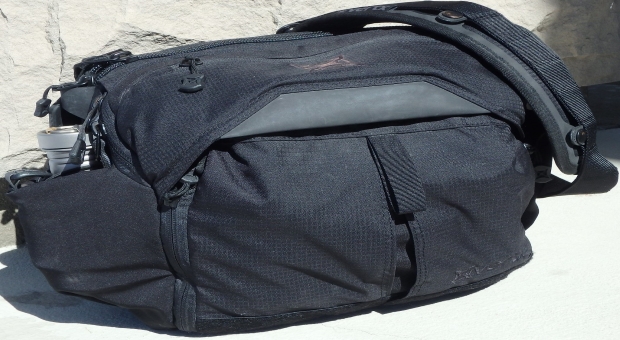
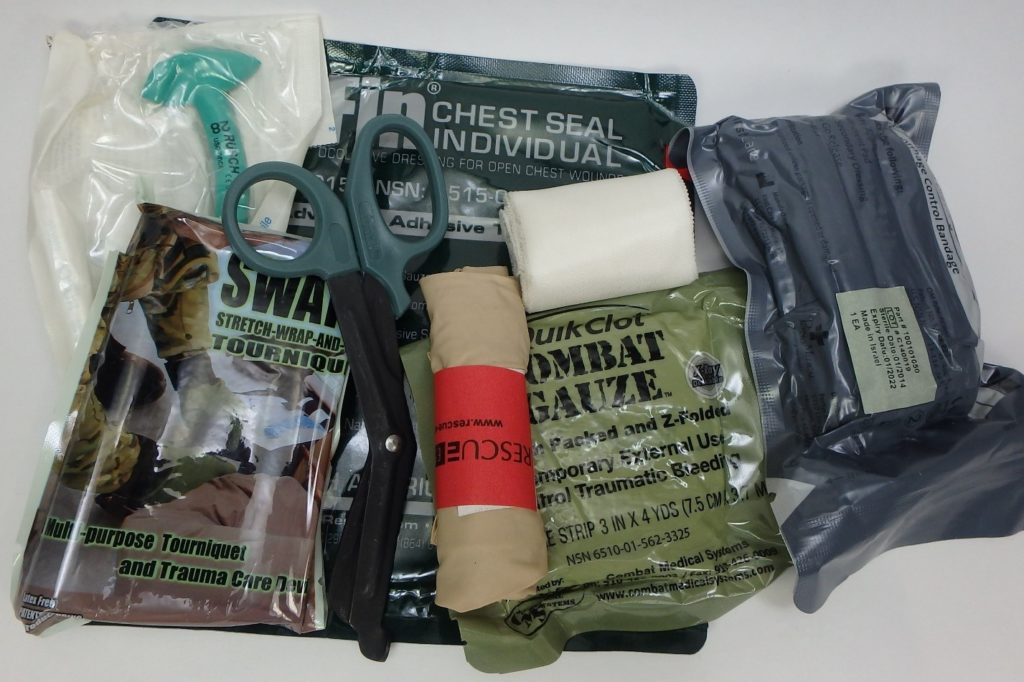


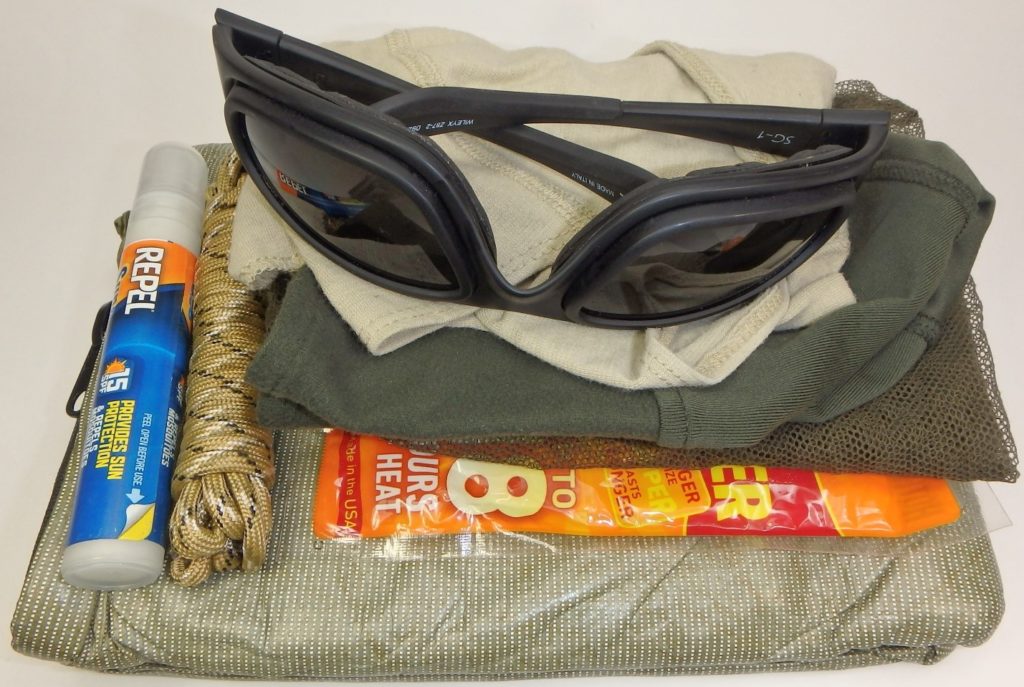
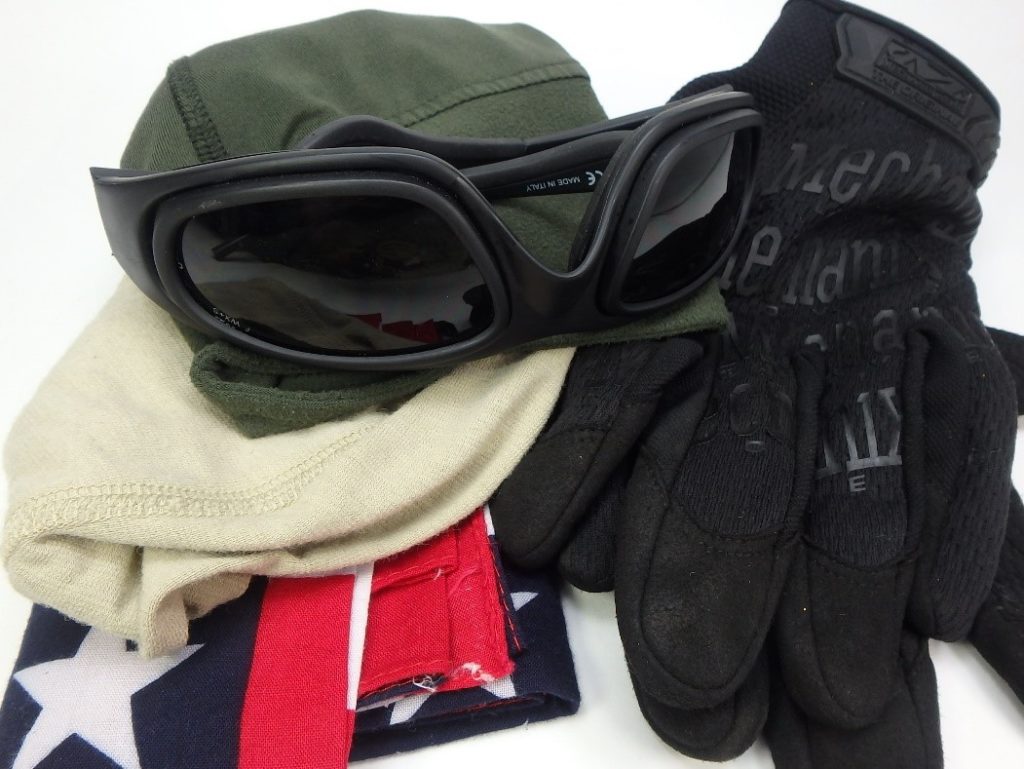
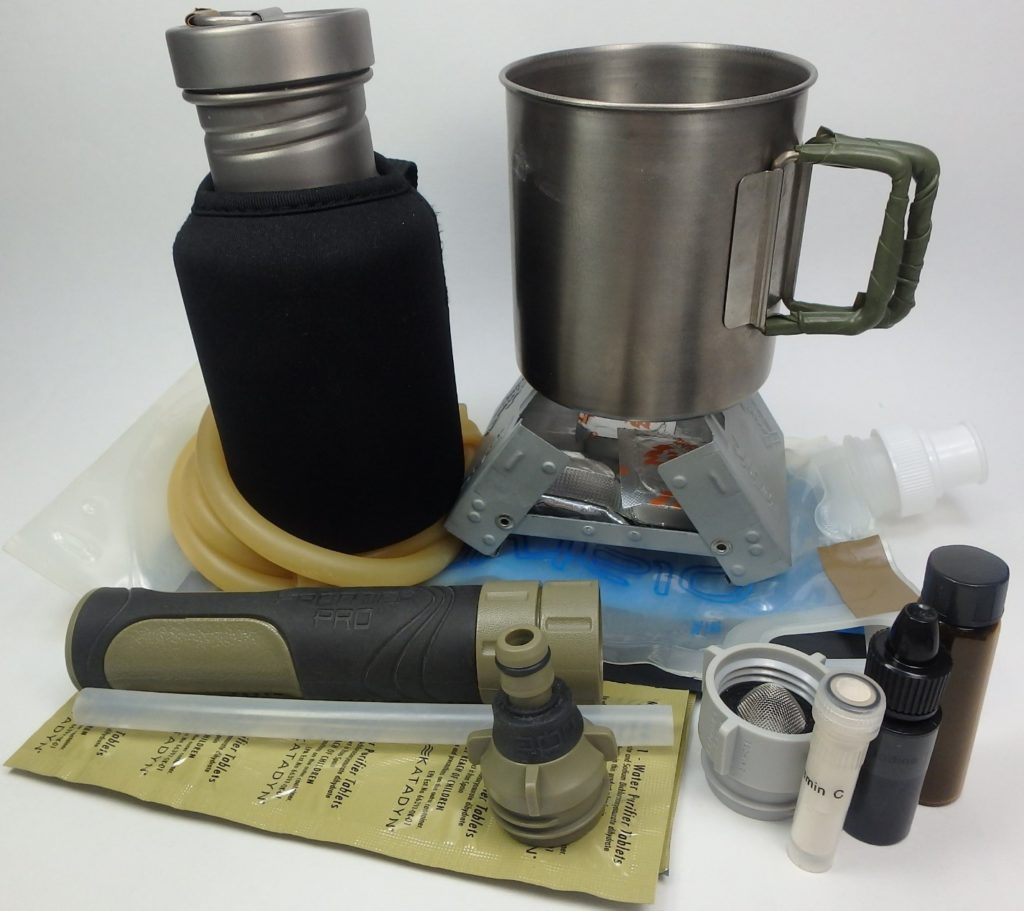
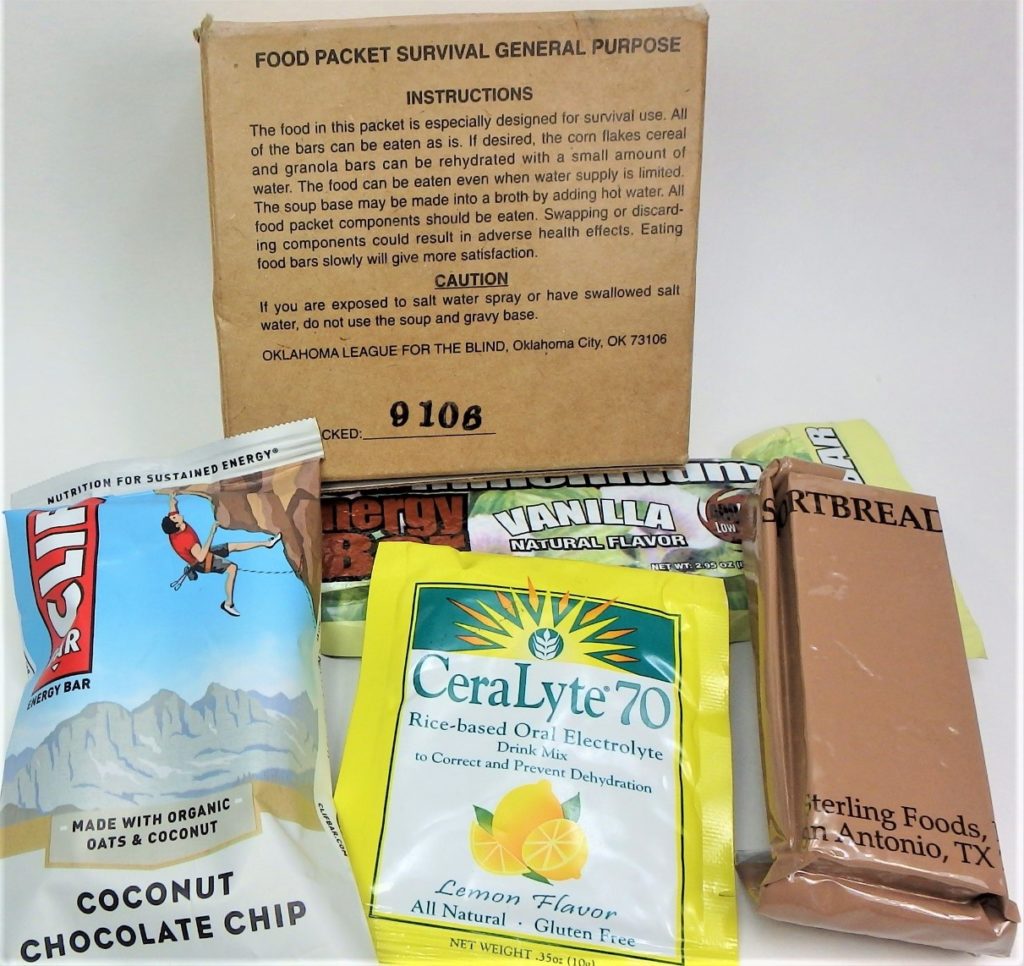
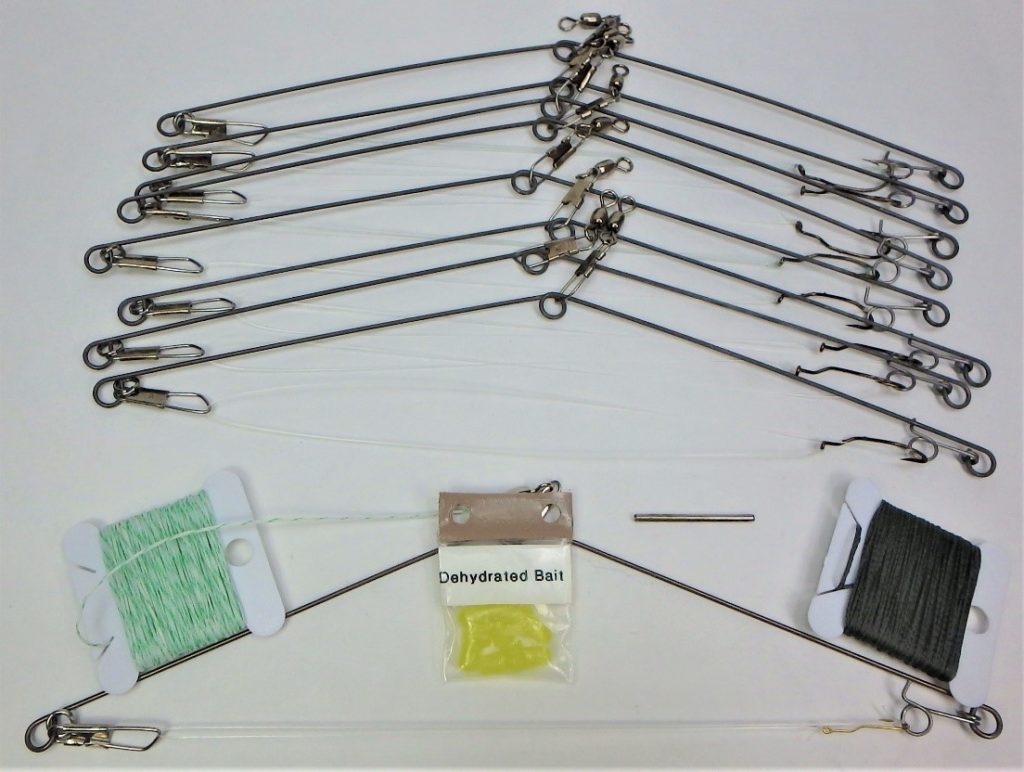

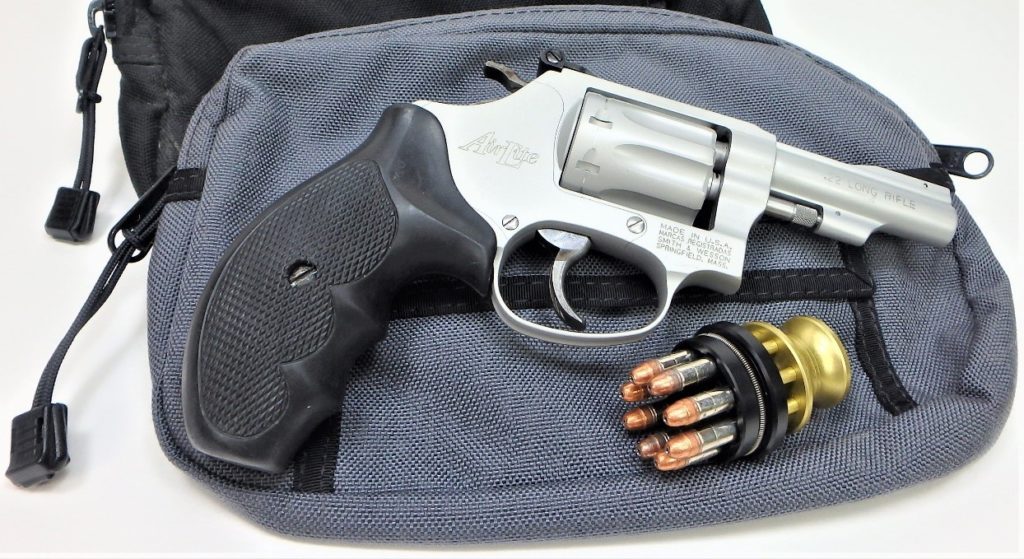


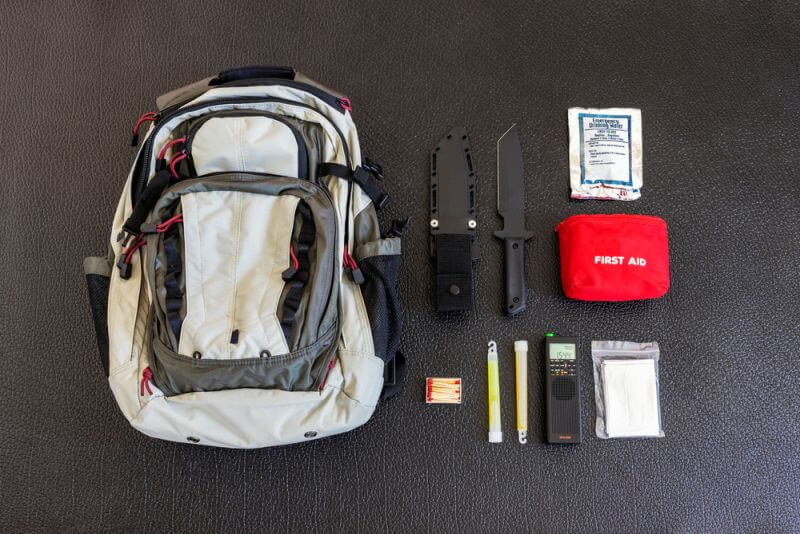
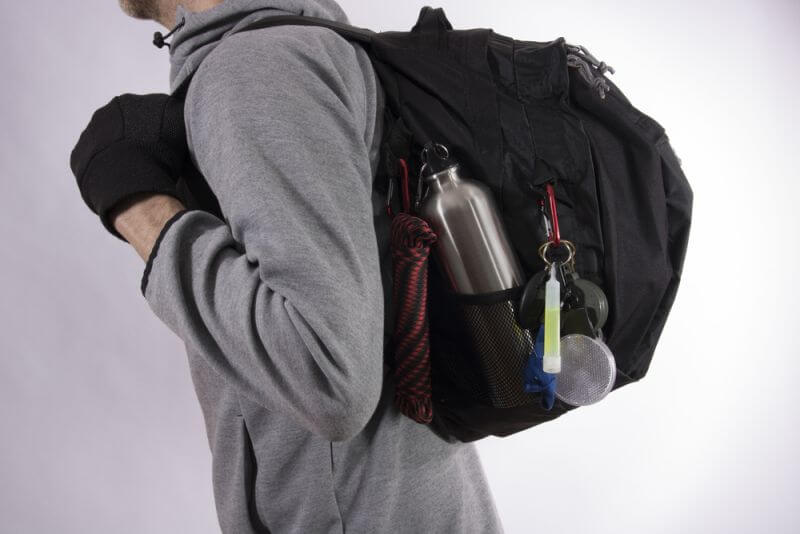
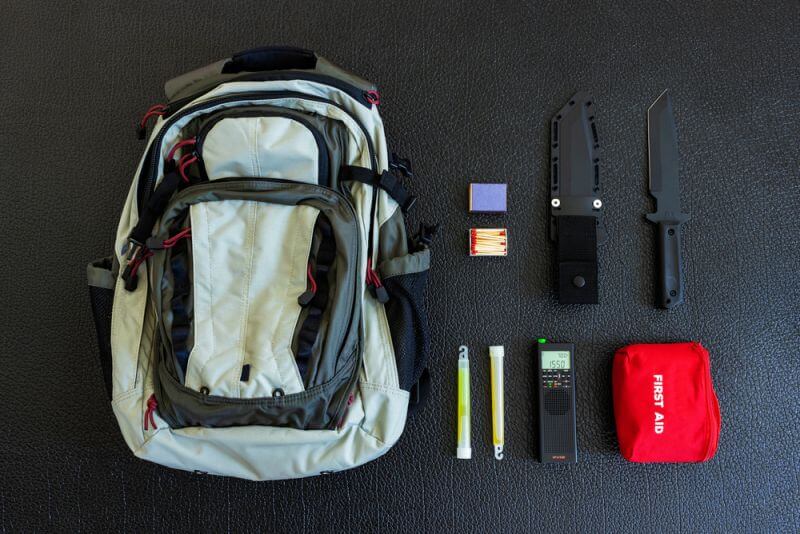
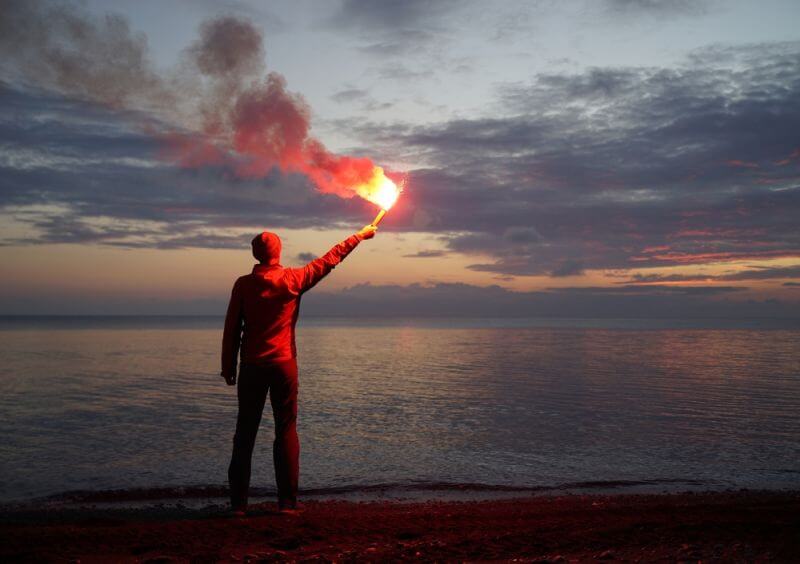

Bill in Idaho | August 25, 2019
|
Superb Article, CVP ! I am going to print out a copy and Really Study it. I can see that you have invested a Lot of Work in this write-up. Thank You !
Cliff | October 1, 2019
|
I could not say it better than “Bill in Idaho” already has about this article. One of the best I have read on this aspect of survival preparedness. I might mention that at times the abbreviations used at times were a bit confusing if you just getting into the Pepper mode. Other than that, I have nothing but praise, and will be printing out this article as well. An excellent shopping list to have.
Cliff in Washington